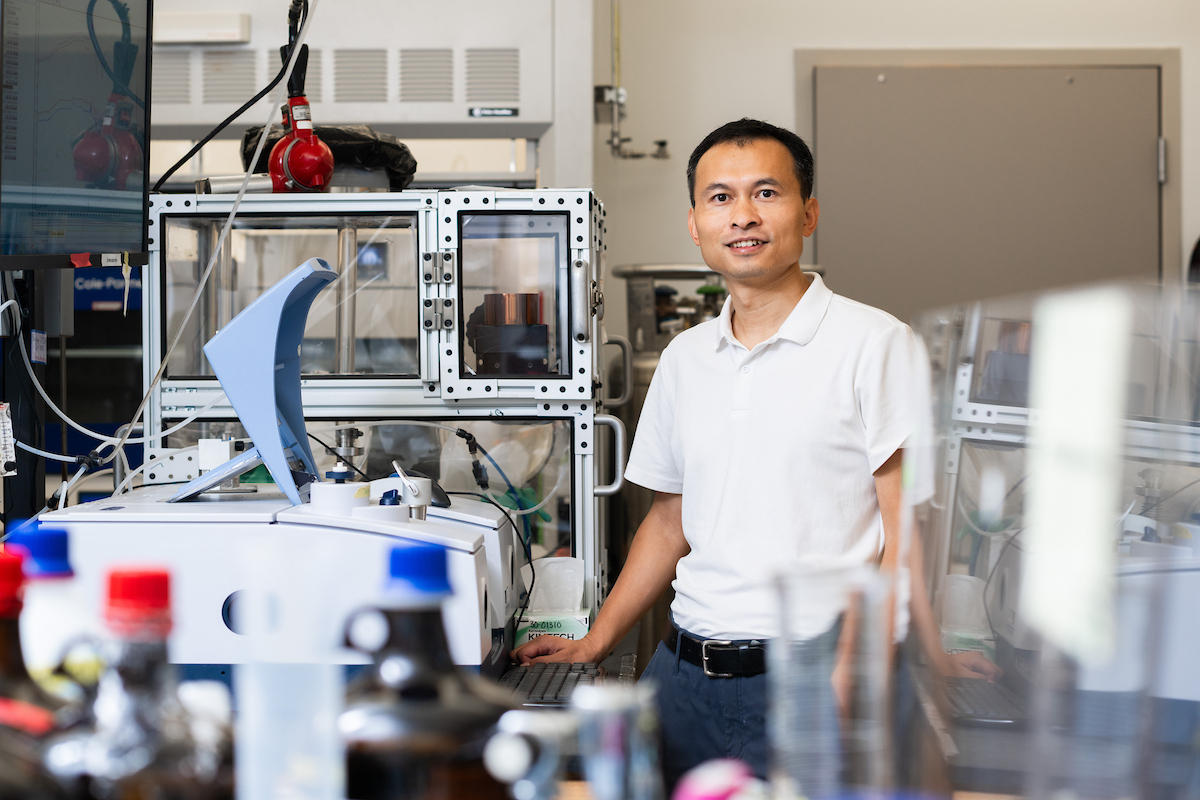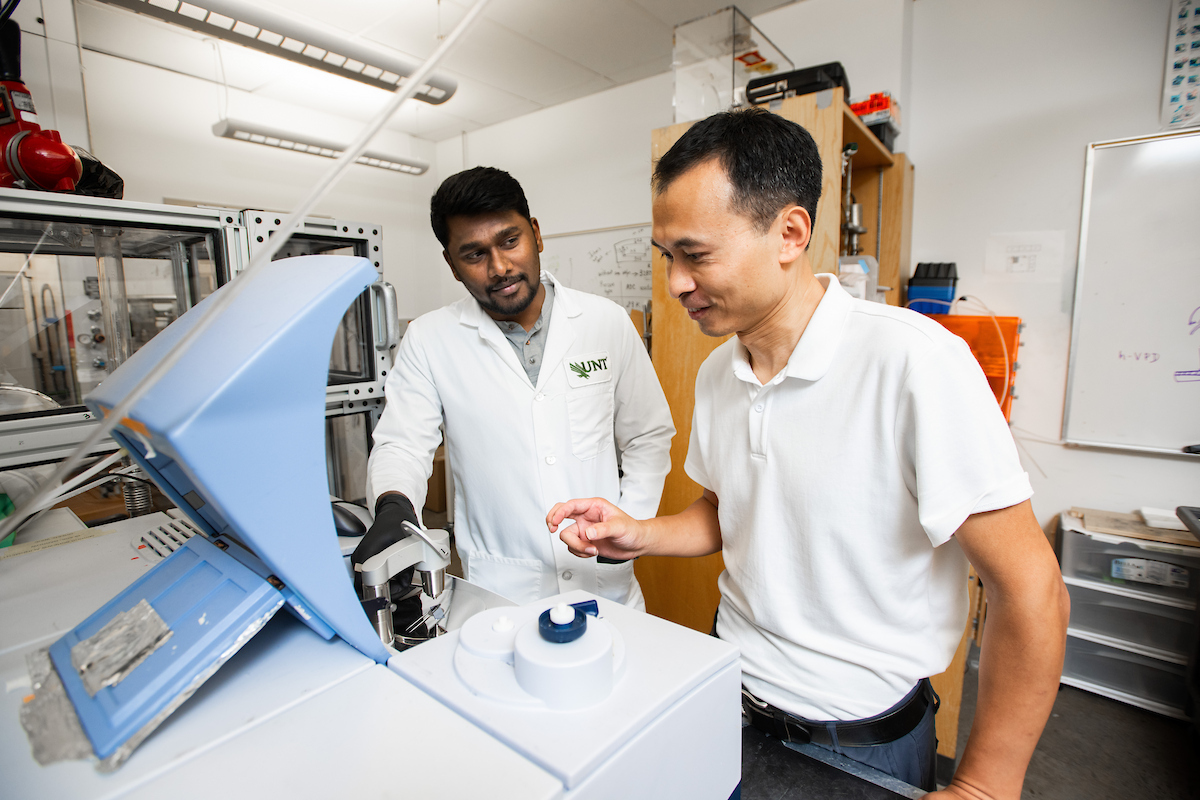
DENTON (UNT), Texas — Nearly every screen and light source today, from televisions to car headlights, relies on tiny components called light-emitting diodes, or LEDs. A team of University of North Texas researchers helped solve a key scientific challenge that led to a breakthrough in deep-blue LED efficiency — work now published in Nature, one of the world’s most prestigious scientific journals.
The research, led by collaborators at Rutgers University, hit a roadblock when it came to proving the presence of hydrogen bonds used in their new LED design that emits blue light at record-setting efficiency. Detecting these tiny bonds at that level is difficult, since it is only an atom thick.
“They developed a novel technique that involves hydrogen bonds as a connection layer to perfectly couple different structures of LED device, but it’s extremely hard to prove the bonds are there,” said Kui Tan, a research associate professor in UNT’s Department of Chemistry and recognized expert in infrared spectroscopy. “They asked for my help to find evidence of the bond’s existence.”

Tan, along with UNT chemistry graduate student Kevin Antony Jesu Durai, used Fourier Transform Infrared spectroscopy located in Prof. Oliver Chyan’s lab, which is supersensitive to H-bonds, to solve the problem. The technique involves firing infrared light at the material and analyzing how much light the sample absorbs at different wavelengths due to chemical bond vibration to determine its chemical makeup.
“Because of confidentiality, I didn’t know what the components were at that time,” said Durai. “They needed someone who could operate the instruments precisely and get clear results.”
Their work took about six months and was critical to the paper’s publication. Both were credited as authors.
Durai said. “I feel like my part was small, so I want to thank Dr. Tan for asking that I be included and the other researchers for acknowledging my contribution.”
Next for Durai is his doctoral research focusing on copper interfaces for microelectronics, such as semiconductors, and how to make them more corrosion resistant. He plans to graduate in the spring and is currently interning with Tokyo Electron.
Tan is continuing to explore hydrogen bonding applications with the Rutgers team and leading a separate UNT project, funded by National Science Foundation, studying how to remove contaminants from water using in situ infrared spectroscopy.
“It’s important for students to see how we apply knowledge to approach and solve difficult problems,” Tan said. “Once they develop their expertise and experience in operating scientific instruments, they can push techniques to their limits to do the best research.”